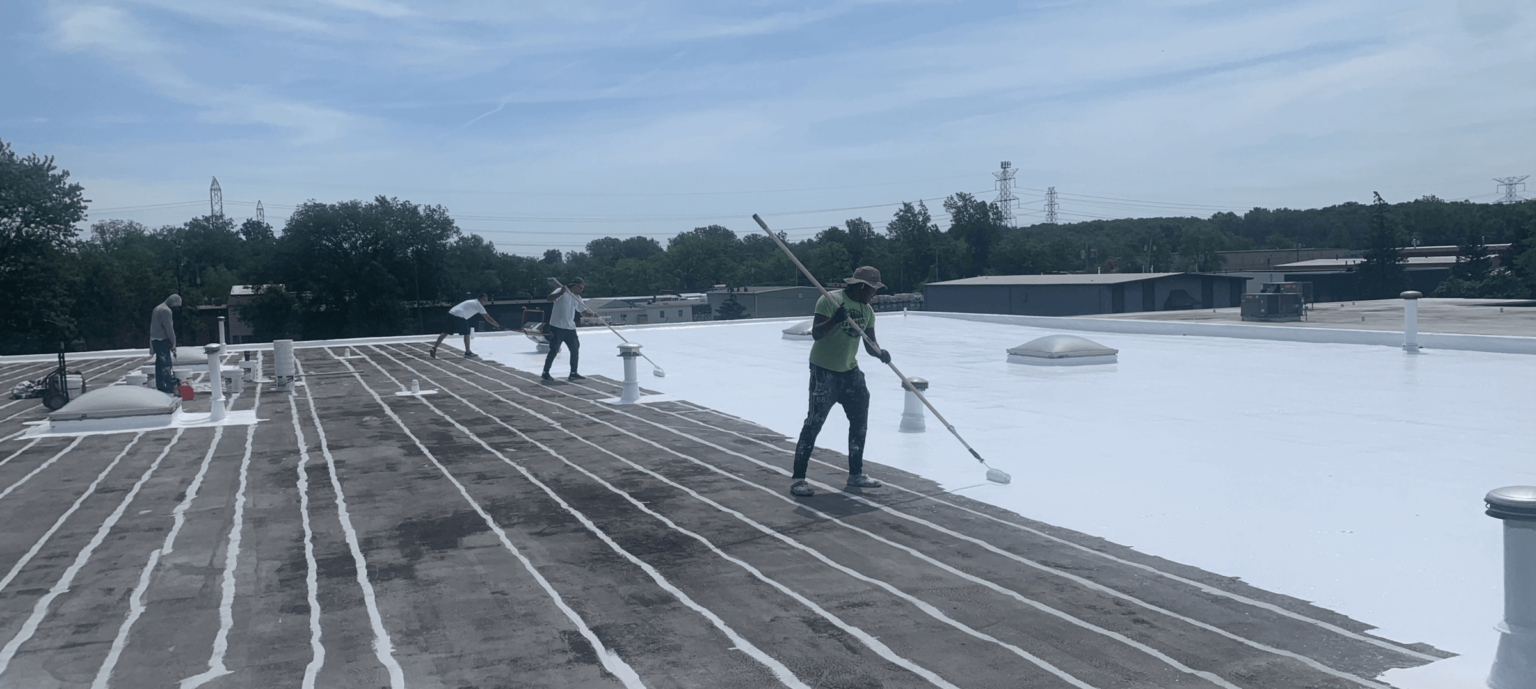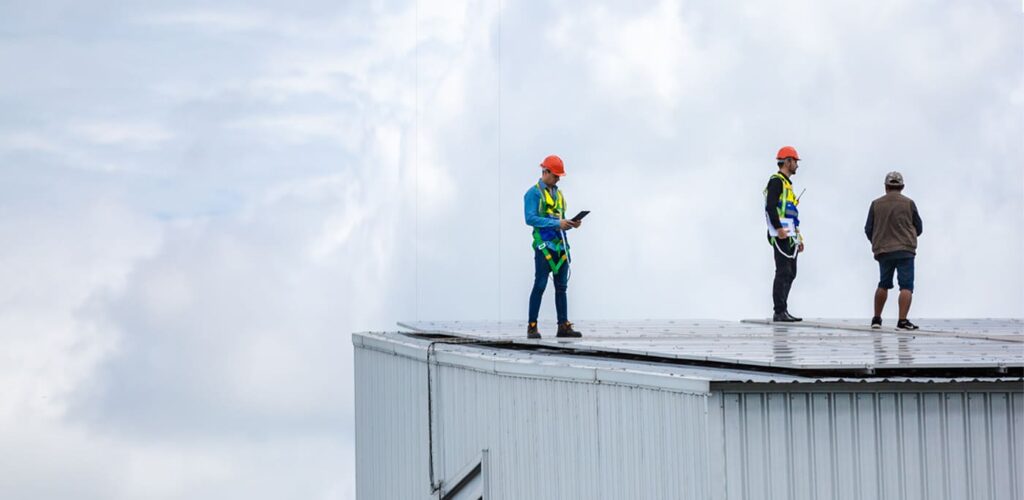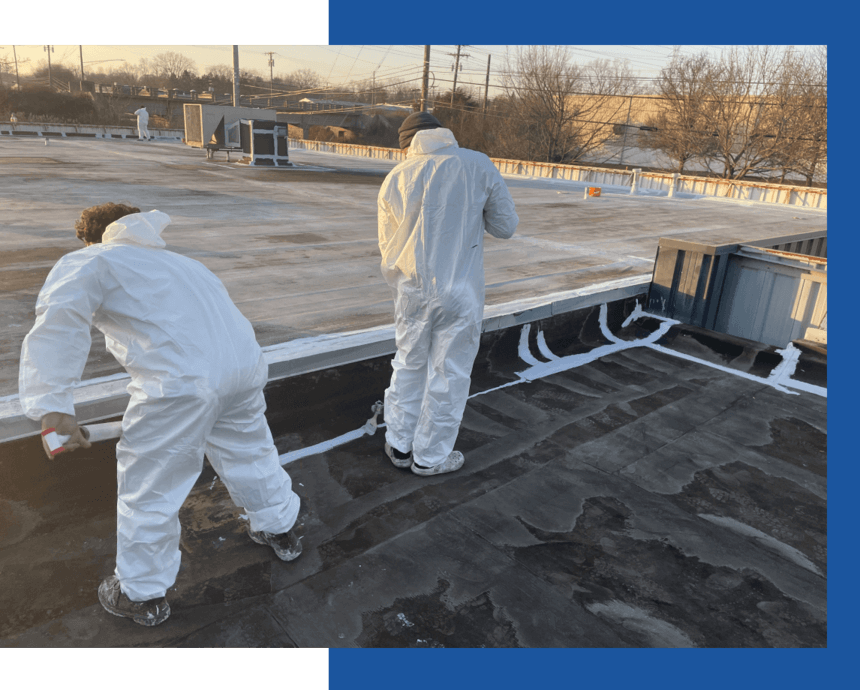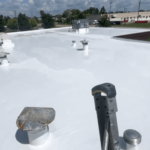
Commercial Roof Inspection Checklist: A Complete Guide for Property Owners
Your commercial roof plays a vital role in protecting your building from the elements, regulating temperature, and maintaining the structural integrity of your property. Over time, however, exposure to sun, rain, wind, and debris can take a toll on even the most durable roofing systems. Regular inspections are essential to identify early warning signs of damage, prevent major issues, and preserve the lifespan of your investment.
This comprehensive commercial roof inspection checklist is designed for building owners, property managers, and facility supervisors who want to proactively care for their roofs. Whether you conduct the inspection yourself or hire a professional roofing contractor, this guide will ensure no detail is overlooked.

Why Commercial Roof Inspections Are Important
Ignoring roof maintenance can lead to serious problems that affect the entire building. A leaking roof can damage insulation, ceiling tiles, walls, electrical systems, and inventory. It can also contribute to mold growth and indoor air quality issues. By conducting regular inspections, you can detect and address small problems before they grow into expensive repairs.
Routine roof inspections offer several key benefits:
- They extend the service life of your roofing system
- They help you budget for future maintenance and avoid surprise costs
- They ensure compliance with manufacturer warranties and insurance requirements
- They identify safety hazards for rooftop workers and tenants below
- They provide peace of mind that your building is protected

Pre-Inspection Preparation
Before beginning the inspection, take the time to prepare properly. This will ensure a more effective and safe process.
- Gather roofing documents, including previous inspection reports, repair records, warranty information, and roofing plans. These records help you track recurring issues and identify areas that need extra attention.
- Choose a dry, calm day for the inspection. Avoid inspecting during rain, snow, or high winds, which can create slippery or unsafe conditions.
- Assemble safety equipment such as hard hats, non-slip boots, gloves, and safety harnesses. If your building requires fall protection measures, be sure to follow local safety regulations.
- Prepare tools like a flashlight for dim areas, a camera to document findings, a measuring tape for assessing damage size, a ladder or roof access system, and a clipboard or mobile device for taking notes.
- Notify tenants or building occupants if the inspection may involve noise or disruption. Ask staff to report any signs of leaks or ceiling stains they have noticed.
Exterior Roof Surface Inspection
Begin your inspection by carefully examining the exterior of the roof. Walk across the surface systematically, checking from edge to edge and corner to corner. Look for the following signs of wear and tear:
- Blisters, cracks, punctures, or bubbling in the roof membrane. These may indicate trapped moisture or structural stress beneath the surface.
- Standing water or poor drainage. Pooled water can accelerate roof deterioration and lead to leaks.
- Debris buildup from trees, wind, or human activity. Leaves, branches, and trash can clog drains and damage the roofing surface.
- Faded, discoloured, or soft areas of the roof. These spots may signal UV damage or rotting materials.
- Separation between layers or edges of the roof membrane, which can lead to water infiltration.
Roofing Material Condition Check
Different roofing materials require different inspection techniques. Whether your roof is made of thermoplastic, modified bitumen, EPDM rubber, metal panels, or shingles, pay close attention to material-specific damage.
- For membrane roofs, check for tears, lifted seams, and signs of bubbling or blistering. These can allow water to seep in between layers.
- For metal roofs, inspect for rust, corrosion, or loose fasteners. Thermal expansion and contraction can loosen panels over time.
- For shingle roofs, look for missing, broken, or curled shingles. Granule loss on asphalt shingles may also indicate age-related wear.
- For all roof types, ensure that transitions between materials are secure and watertight.
Flashing and Sealing Review
Flashing and sealants are crucial for keeping water out of vulnerable points such as roof penetrations, joints, and corners. Damaged flashing is one of the most common causes of commercial roof leaks.
- Examine the flashing around chimneys, vents, skylights, HVAC units, and any other rooftop fixtures.
- Look for corrosion, cracks, warping, or detachment in metal flashing.
- Inspect sealants and caulking to ensure they are not dry, brittle, or separating from the surface.
- Replace any damaged or missing flashing immediately to avoid moisture intrusion.
- Make sure transitions between walls and roof surfaces are properly sealed and show no signs of deterioration.
Gutters and Roof Drainage System
A functioning drainage system prevents water accumulation that can lead to leaks, structural damage, or the growth of moss and algae. Make sure the entire drainage system is free-flowing and in good condition.
- Inspect gutters and downspouts for signs of clogging from leaves, dirt, or debris.
- Check for sagging or detached gutter sections that could prevent proper water flow.
- Examine scuppers and roof drains for signs of blockage or backup.
- Ensure downspouts direct water away from the building foundation to prevent erosion or flooding.
If your roof has internal drains, test them to ensure water is moving quickly and efficiently off the roof.

Penetrations and Rooftop Equipment
Penetrations such as vents, pipes, skylights, and mechanical units are common weak points on any roof. Every item that punctures the roofing membrane should be examined closely.
- Look for cracks or gaps in the seal around penetrations.
- Confirm that equipment is mounted securely and not putting excess stress on the roof.
- Check for ponding water around rooftop units, which can signal blocked drains or poor roof slope.
- Inspect equipment stands and platforms for rust, loose fittings, or shifting due to weight.
- Ensure all penetrations are properly flashed and sealed to prevent leaks.
Interior Inspection
A thorough roof inspection should always include a look inside the building, especially in areas directly below the roof. This can reveal hidden problems that are not visible from the outside.
- Check ceilings for yellow or brown water stains, which indicate past or current leaks.
- Look for mold, mildew, or musty odours in upper-level rooms or attic spaces.
- Inspect drywall and insulation for signs of dampness or water damage.
- Examine steel beams, wooden trusses, or rafters for rust, rot, or warping.
- Pay special attention to areas near vents, skylights, and mechanical penetrations.
Structural Roof Evaluation
A roof is more than just the outer membrane. The structure beneath it must support the weight of equipment, rainwater, snow, and foot traffic. If the structure is weak, the entire system is at risk.
- Look for uneven roof surfaces or sagging areas, which can signal problems with the decking or supports.
- Check for cracks or movement in structural elements like beams and joists.
- Inspect the roof deck for signs of rot, moisture absorption, or warping.
- Ensure that load-bearing points are properly braced and not overloaded.
- Address any structural concerns immediately to avoid collapse or failure.
Inspection of Skylights and Windows
Skylights and roof windows offer natural light but can be leak-prone if not properly installed and maintained.
- Check skylight glass for cracks, chips, or discoloration.
- Inspect skylight flashing and surrounding sealants for gaps or degradation.
- Ensure skylights are properly sloped to direct water away from the seams.
- Verify that rooftop windows are shut tightly and their weatherproof seals are intact.
- Examine any signs of condensation between skylight panes, which can indicate a failed seal.
Roof Access and Safety Features
Safe access is essential for routine inspections and repairs. All roof access points and safety features should be in excellent condition and compliant with current standards.
- Inspect roof ladders, access hatches, stairs, and walkways for stability and corrosion.
- Check safety rails, guardrails, and anchor points for integrity and visibility.
- Ensure all safety signage is present, clear, and in good condition.
- Confirm that anyone working on the roof has access to fall protection gear and training.
- Establish protocols for routine maintenance inspections that prioritise worker safety.

Documentation and Reporting
The final step in the inspection process is to document everything thoroughly. A well-documented inspection provides a record of the roof’s condition and helps you plan future maintenance.
- Use checklists to guide your inspection and ensure consistency each time.
- Take photos of all key areas, including damage, equipment, and problem spots.
- Rate each section of the roof using categories like good, fair, or poor condition.
- Summarise your findings in a written report that outlines any repairs needed.
- Keep this report on file and share it with your roofing contractor if professional repairs are needed.
How Often Should You Inspect a Commercial Roof
A good rule of thumb is to inspect your commercial roof at least twice a year, typically in the spring and fall. This helps you catch seasonal damage and prepare for weather changes. However, you should also inspect the roof:
- After severe weather events like hail, strong winds, or heavy snow
- If you notice interior leaks, ceiling stains, or changes in HVAC performance
- Whenever rooftop equipment is installed or moved
- If your roof is nearing the end of its expected lifespan
- As required by your manufacturer warranty or local regulations
The Importance of Regular Commercial Roof Inspections
A commercial roof inspection is a critical, proactive measure that goes far beyond routine upkeep. It plays a vital role in safeguarding your property, protecting your investment, and ensuring the safety and comfort of your building’s occupants.
By incorporating this comprehensive checklist into your regular maintenance schedule, you can identify potential issues before they escalate, avoid costly repairs, and significantly extend the lifespan of your roof. Stay ahead of problems, preserve the integrity of your property, and enjoy peace of mind knowing your roof is in optimal condition.
Detroit Area Commercial Building Owners and Manager – Get a Professional Inspection
If you’re ready to get a professional’s take on the health of your commercial building’s roof, Silicoat Roofing is the Detroit Area’s premier commercial roofing resource. Call us today at (248) 788-6010


 Next Post
Next Post